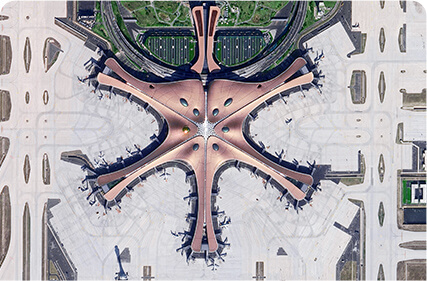English
The satellite remote sensing refers to the comprehensive technical system of observing the Earth and celestial bodies from the ground to space. Satellite data can be obtained from remote sensing technology platforms through remote sensing instruments, information reception, processing, and analysis.
Remote sensing is a method of detecting and monitoring the physical characteristics of an area by measuring the reflected and emitted radiation at a certain distance from a satellite or aircraft. Remote sensing cameras collect images that help researchers "perceive" things on Earth.
Cameras on satellites and aircraft capture photos of large areas of the Earth's surface, much more than what can be seen from the ground. Sonar systems on ships can be used to create underwater images without actually entering the depths. Satellite cameras can be used to capture photos of changes in ocean temperature.
One specific application of Earth remote sensing images is mapping large forest fires from space. In addition, remote satellites can track cloud cover to aid in weather prediction or observe erupting volcanoes and dust storms. They are also used to monitor urban development and changes in farmland or forests over several years or decades.
Satellites are primarily in three types of orbits: polar orbits, non-polar low Earth orbits, and geostationary orbits.
Polar satellites are located in an orbit plane that is inclined nearly 90 degrees to the equatorial plane. This inclination allows the satellite to cover the entire Earth, including the polar regions, providing observations from locations inaccessible from the ground. Many polar orbit satellites are also considered sun-synchronous, meaning the satellite passes over the same location at the same time in each solar cycle.
Polar orbits can be ascending or descending. In an ascending orbit, the satellite moves from south to north as its path crosses the equator. In a descending orbit, the satellite moves from north to south.
Satellites in non-polar low Earth orbits are usually at altitudes of less than 2,000 kilometers above the Earth's surface. For reference, the orbit height of the International Space Station is around 400 kilometers. These orbits do not provide global coverage but only cover a range of latitudes.
Geostationary satellites follow the Earth's rotation and move at the same rotational speed. This makes them appear fixed in one position to observers on Earth. Therefore, these satellites capture the same view of the Earth in each observation, providing almost continuous coverage of an area.
